Summer is here and the sunny season is around the corner. Consuming adequate water and having seasonal fruits help you escape the heat. But revamping your wardrobe is an equally smart step. In this blog, I am sharing the beauty of breathable Indian fabrics that will not only help you beat the heat but also let you ace your fashion game.
Revamping your wardrobe for the summer season is essential for several reasons. Every clothing piece contributes to your comfort, style, and well-being during the warmer months.
The change in weather calls for a shift in clothing to adapt to the rising temperatures. Summer comes with intense heat and humidity, making you feel uncomfortable in heavy fabrics.
By revamping your wardrobe for summer, you can swap thick layers and dark colors for lightweight, breathable fabrics. It allows your skin to breathe and prevents overheating.
With longer days and warmer weather, I always plan summer outdoor activities. Picnics, beach trips, and outdoor water sports (need I say any more). Hence, it becomes important to bring back your summer essentials and soak in the summer fun.
Revamping your wardrobe is an opportunity to refresh your old clothes with new ones. While fashion trends may evolve every season, Indian fabrics offer the classic and evergreen charm to beat the heat during the scorching summer days.
Now, let’s explore and learn more about the beauty of Indian fabrics and which of these would best suit your summer.
9 Airy Indian Fabrics You Must Have in Your Summer Wardrobe
Did you know that updating your wardrobe for summer can have psychological benefits, too?
Wearing clothing well-suited to the season can boost your mood and confidence. It helps you feel more comfortable and at ease in your skin.
The simple summer routine of changing your wardrobe and updating it with the quintessential Indian fabrics can signify a fresh start and a renewed sense of energy. It even sets the tone for a more positive and enjoyable summer ahead.
Indian summers can really force you to not step out at all and spend your entire day hiding yourself from the scorching sun.
While the weather is quite tough to survive, our culture also offers a wide range of fabrics. These are not just perfect for beating the heat, but they also let you do the glam without compromising on your fashion quotient.
So, let’s get into the list of 9 airy Indian fabrics that will help you beat the heat in the summer days.
1. Cotton
Cotton reigns supreme as the king of breathable Indian fabrics. This versatile fiber is renowned for its softness, breathability, and moisture-wicking properties.
What you may not know is that with a rich history dating back thousands of years, India is one of the largest producers of cotton globally.
From the handwoven cotton sarees of West Bengal to the intricately embroidered cotton kurtas of Gujarat.
Cotton is deeply woven into the cultural fabrics of India. Its ability to allow air circulation while absorbing sweat makes it the perfect choice for everyday wear. It ensures you stay cool and comfortable even on the hottest days.
A cotton clothing piece is like a summer wardrobe essential that you must definitely have in your closet.
Today, Indian cotton continues to be celebrated for its softness, durability, and ability to adapt to various climates. It remains a staple in wardrobes worldwide.
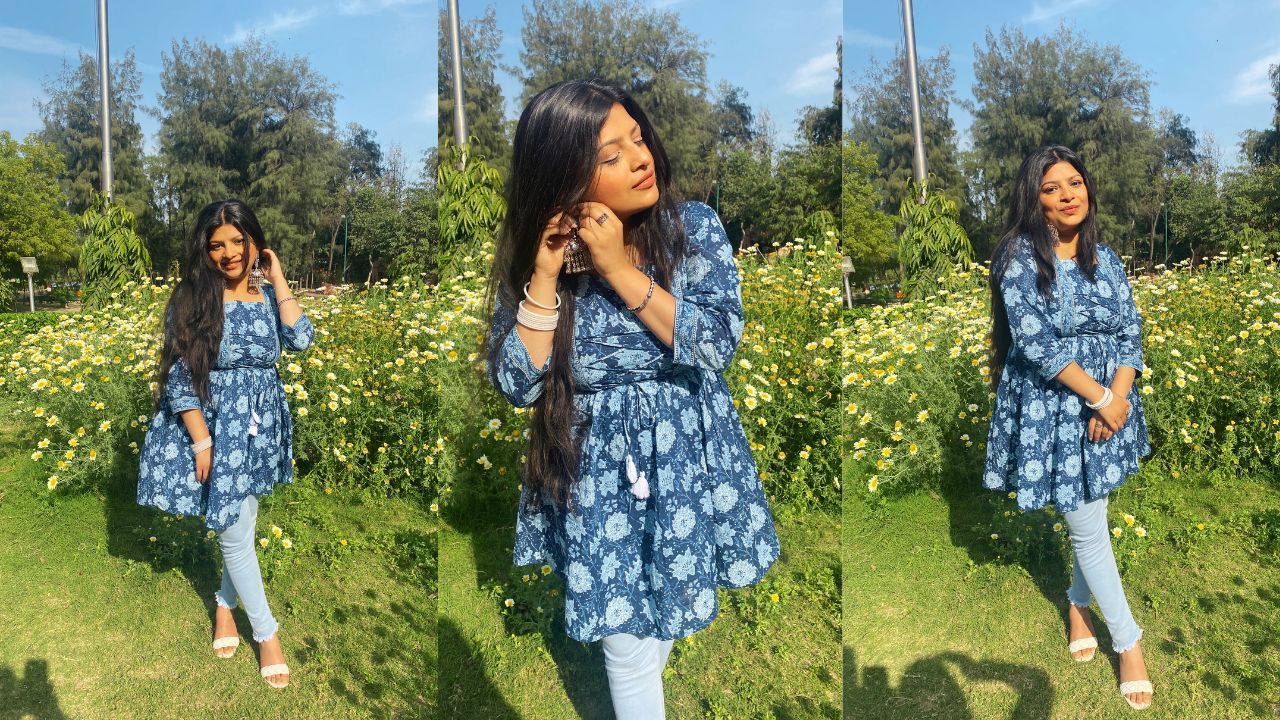
Here’s one of my favorite cotton cloths. This is a short kurti I wore to celebrate my birthday with my friends, and it was a treat to wear even on the sunny days of Delhi.
2. Khadi
Khadi is synonymous with India’s struggle for independence under Mahatma Gandhi’s leadership. It holds a special place in the hearts of Indians.
Khadi embodies simplicity, elegance, and sustainability. Its loose weave allows ample ventilation, making it an ideal choice for hot and humid climates.
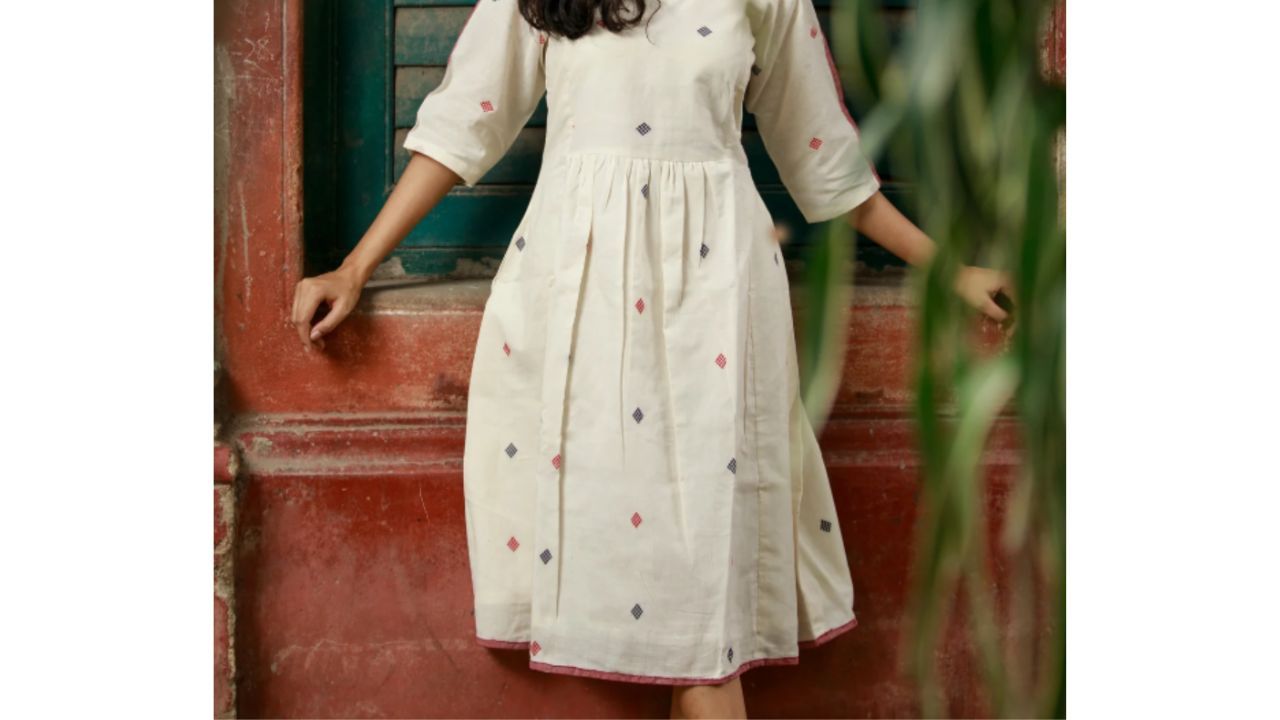
What sets Khadi apart is not just its breathability but also its symbolism of self-reliance and empowerment.
By choosing khadi, you not only stay cool but also contribute to the legacy of India’s freedom fighters and support local artisans.
3. Linen
Linen is derived from the flax plant. It is known for its exceptional breathability and moisture-wicking properties. With evidence of linen textiles found in archaeological sites across the country, India’s association with linen dates back to ancient times
What makes linen unique among all the other Indian fabrics?
It can absorb moisture while allowing for quick evaporation. It keeps you cool and dry in even the most sweltering conditions. From lightweight linen sarees to breezy linen shirts, this fabric exudes effortless elegance and luxury.
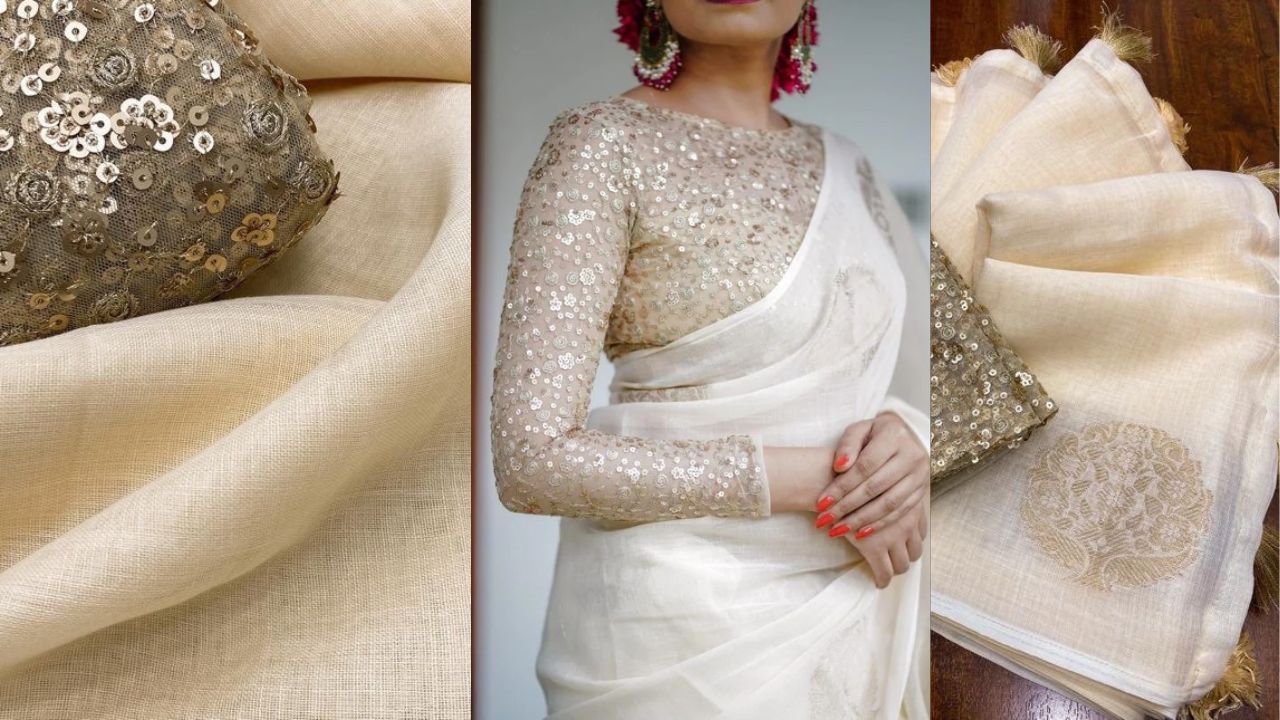
Linen is not just about staying cool, it’s about celebrating the beauty of natural fibers and timeless craftsmanship.
4. Mulmul
Mulmul, also known as muslin, is a lightweight cotton fabric that feels like a gentle caress against the skin. It originated from the Indian subcontinent.
Mulmul has been prized for its softness and breathability for centuries. Its airy texture allows for maximum airflow, which makes it the perfect choice for hot summer days, when even the slightest breeze brings relief.
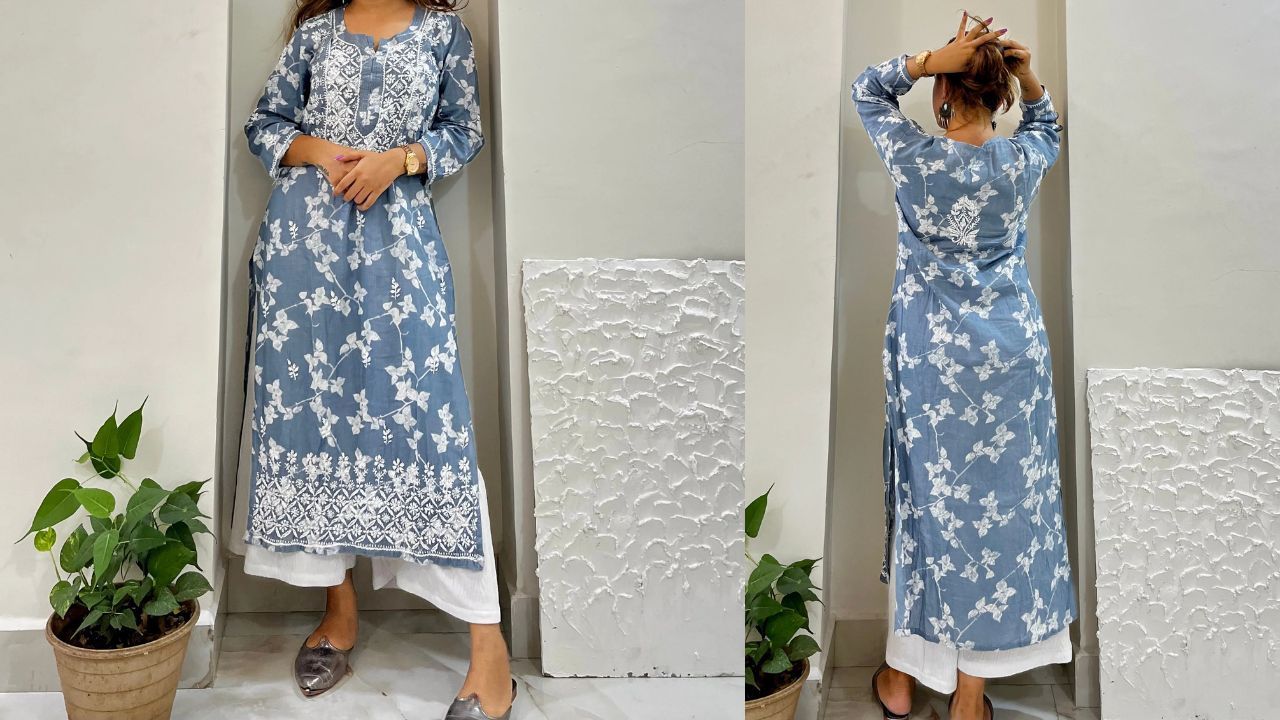
What many may not know is that due to its sheer, delicate nature, mulmul was once considered so valuable that it was often referred to as “woven air”.
Today, mulmul sarees, dupattas, and kurtas continue to enchant with their ethereal charm and timeless appeal.
5. Chanderi
Chanderi is named after the town in Madhya Pradesh where it originated. It is a blend of silk and cotton known for its sheer texture, lightweight feel, and subtle sheen. This Indian fabric has a rich history dating back to the Mughal era when it was used by royalty for its elegance and grace.
What sets Chanderi apart is its intricate traditional motifs woven into the fabric, adding a touch of sophistication to any ensemble.
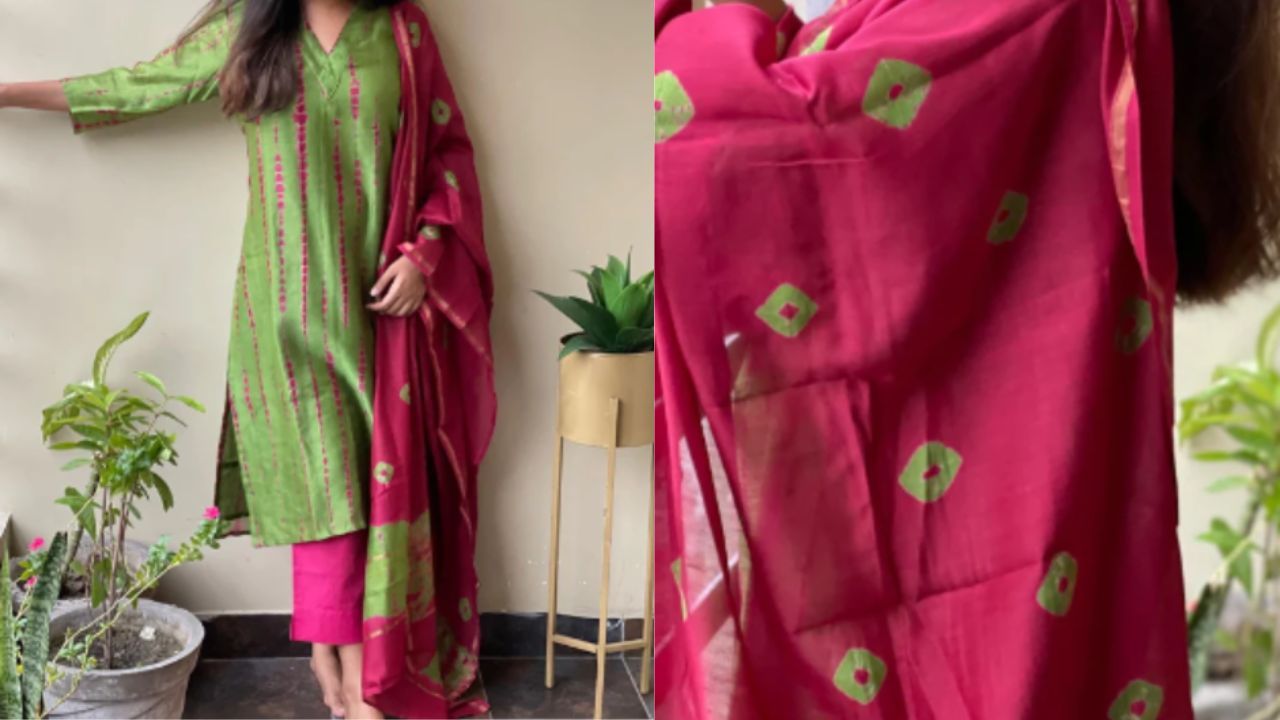
Chanderi sarees and suits are perfect for summer outings. They offer you both style and comfort without compromising on tradition. By choosing Chanderi, you not only stay cool but also value the legacy of India’s royal heritage.
6. Jamdani
The next in line for our Indian fabrics is Jamdani. Jamdani originated from the Bengal region. It is a traditional hand-woven fabric known for its intricate floral or geometric motifs. Woven on handlooms by skilled artisans, Jamdani sarees are prized for their exquisite craftsmanship and ethereal beauty.
What sets Jamdani apart is its labor-intensive weaving process. Each motif is meticulously woven by hand, resulting in a fabric that is as unique as it is timeless. Jamdani sarees are lightweight and breathable, making them perfect for summer wear.
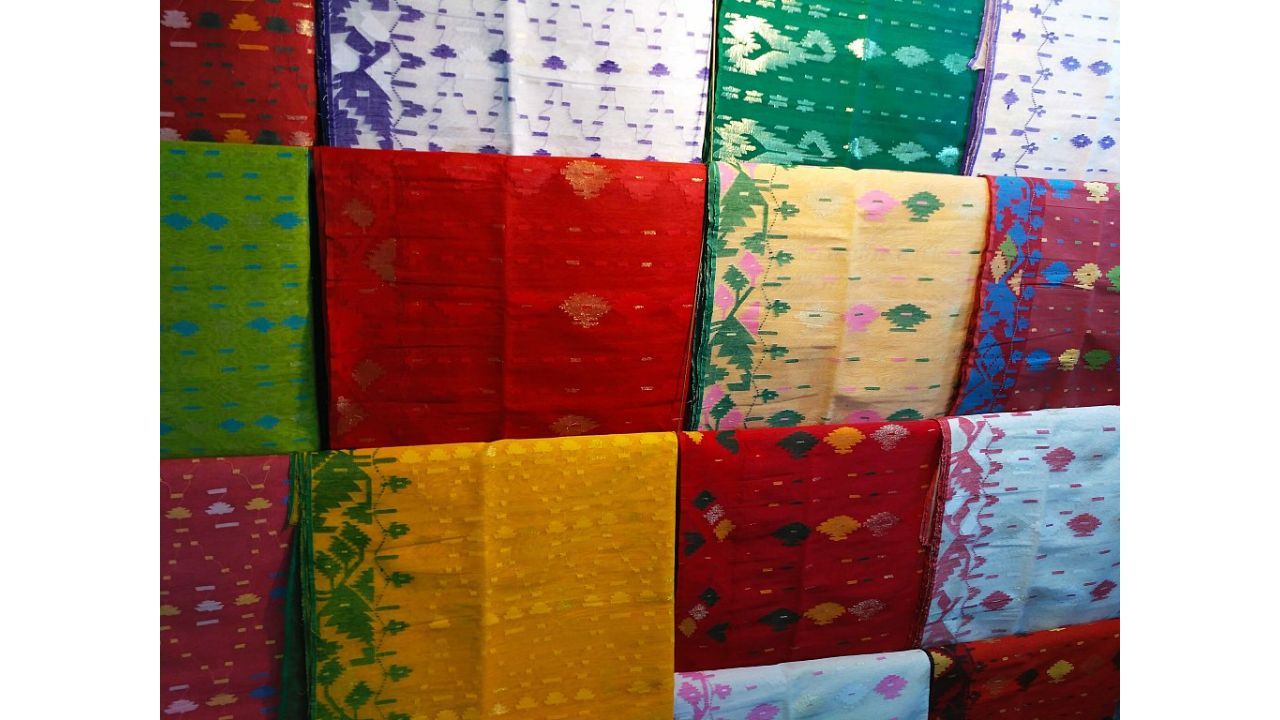
By choosing Jamdani, you not only stay cool but also support traditional weaving communities. And preserve a centuries-old craft.
7. Kota Doria
Kota Doria, hailing from Rajasthan, is a lightweight fabric woven from cotton and silk yarns. Its airy texture and delicate weave make it an ideal choice for hot and dry climates like Indian summers
Kota Doria was traditionally woven by weavers in the town of Kota. They used a distinctive square-check pattern known as “khats.”
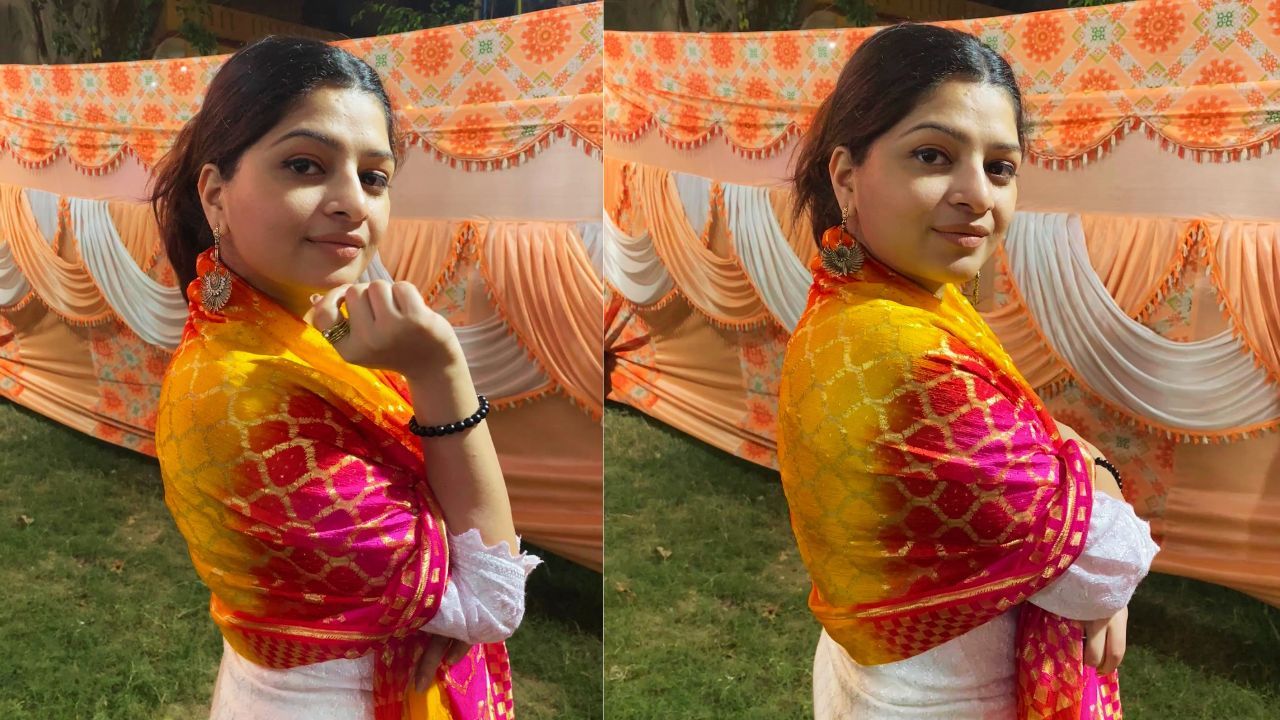
This is a veil made from Kota Doria, we call it a dupatta in Hindi. My father received it as a token of appreciation in a social event. As soon as I saw it, I knew it was going to my traditional closet.
Today, Kota Doria sarees still captivate with their signature checkered or striped patterns. These sarees are admired for their understated elegance. They possess a timeless appeal that endures through generations.
By choosing Kota Doria, you not only stay cool but also embrace the legacy of Rajasthan’s rich textile heritage.
8. Tussar Silk
Tussar silk, also known as wild silk, is produced by silkworms that feed on various types of leaves. It has a rich texture and natural sheen that adds a touch of luxury to summer attire. What sets Tussar silk apart is its rustic charm and earthy appeal. Making it perfect for casual and festive wear.
Tussar silk sarees and suits are known for their breathability and comfort. They offer elegance without sacrificing comfort.
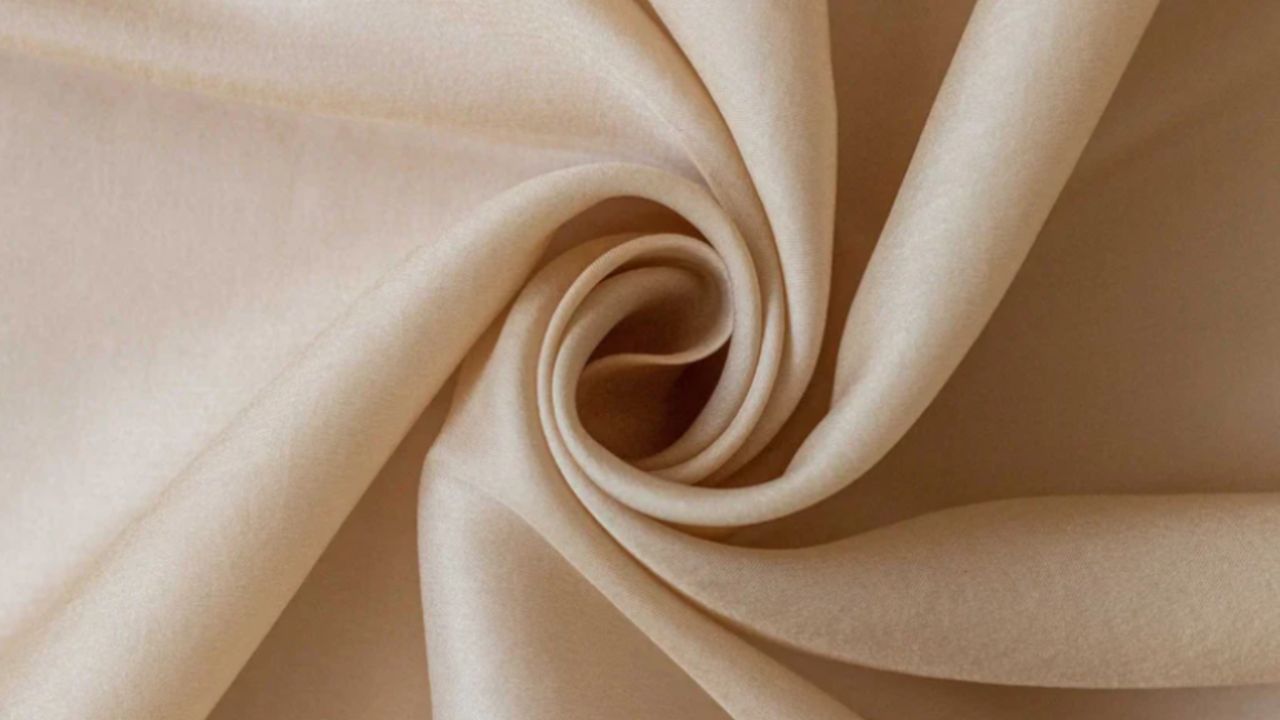
Choosing Tussar silk keeps you cool in warm climates. It also supports sustainable silk production practices. It also empowers local communities involved in silk production.
9. Lucknowi Chikankari
Last but not least is Lucknowi Chikankari. A delicate and intricate form of embroidery hails from the culturally rich city of Lucknow in India.
Chikankari is renowned for its fine craftsmanship and elegance. It involves the artful stitching of white thread on sheer muslin or cotton fabric, creating beautiful floral and geometric patterns.
During the peak of Indian summer, Lucknowi Chikankari becomes not just a fashion statement but also a savior. saviour.
The lightweight, breathable fabrics coupled with the airy designs of Chikankari give maximum airflow, keeping the wearer cool and comfortable even on the hottest days.
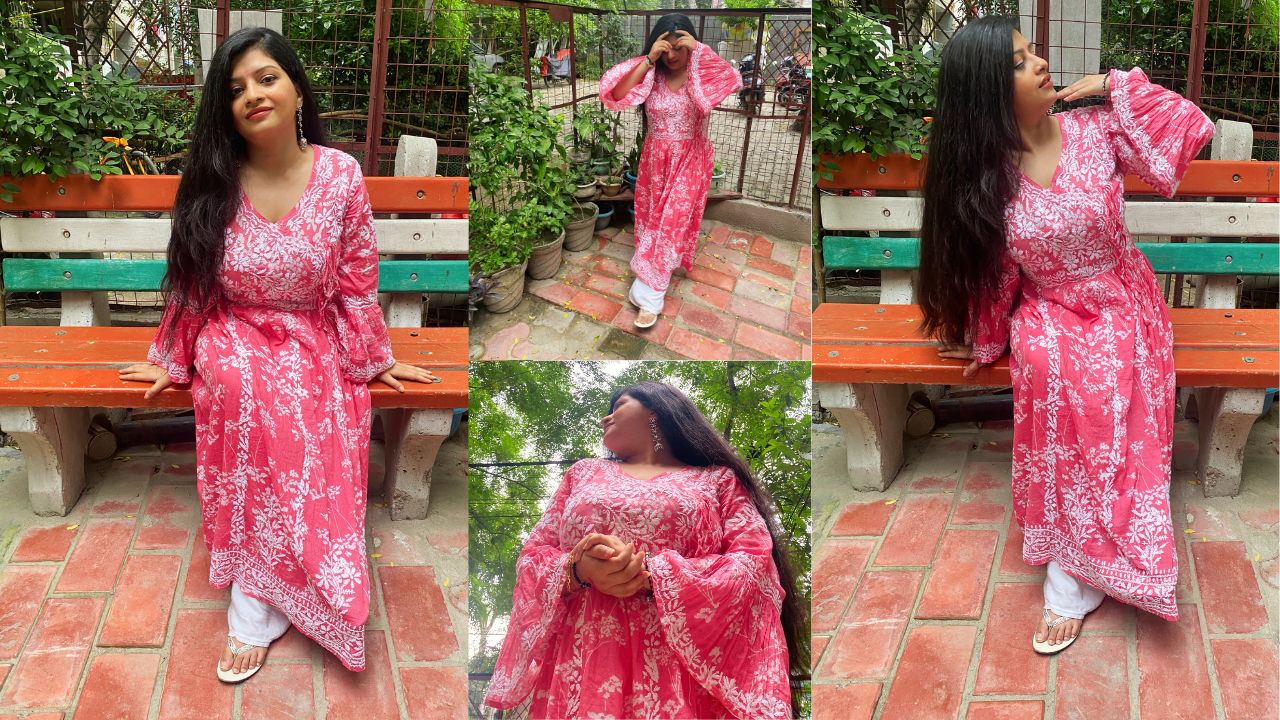
I got this beautiful Chikankari suit from The House of Chikankari, and it’s safe to say that it has been a staple in my summer clothing capsule.
This timeless craft showcases artistic finesse and practical solutions for enduring the sweltering Indian summer with grace and style.
What Other Factors Should You Consider When Picking Indian Fabrics for Summer?
1. Natural Dyes and Eco-friendly Options
Natural dyes are derived from plants, roots, and insects. It offers unique colors and patterns and reduces environmental impact compared to synthetic dyes. This makes them a sustainable choice for eco-conscious consumers.
2. Handloom Fabrics
Explore handloom fabrics crafted by skilled artisans using traditional weaving techniques. These fabrics, such as handwoven khadi or jamdani, showcase exquisite craftsmanship and support local communities. By using these fabrics you are preserving cultural heritage.
Choosing handloom fabrics also contributes to the promotion of sustainable livelihoods. It also preserves indigenous textile traditions.
3. Smart Fabrics with Advanced Technologies
Keep an eye out for smart fabrics infused with advanced technologies designed to enhance performance and comfort.
For example, Ultra-lite sun guard fabric incorporates moisture-wicking properties, UV protection, or antimicrobial finishes to keep you cool, dry, and odor-free even in the hottest conditions.
4. Thermal Regulation Fabrics
Look for fabrics designed for thermal regulation. It helps maintain optimal body temperature regardless of external conditions.
Ultra Lite Aerocool incorporates phase-change materials that absorb, store, and release heat as needed. Providing a comfortable and balanced microclimate for the wearer.
5. Biodegradable Fabrics
Fabrics such as lyocell and modal are derived from renewable sources. Such as wood pulp, and undergoing eco-friendly production processes.
By choosing biodegradable fabrics, you support sustainable fashion practices. And contributes to a cleaner, greener planet for future generations.
How to Increase the Lifespan of Your Indian Fabrics?
1. Gentle washing
Use a mild detergent specifically formulated for delicate fabrics. Look for detergents labeled as “gentle” or “suitable for delicate fabrics” to ensure that they won’t cause damage.
Avoid overcrowding the washing machine to allow the fabric to move freely during the washing cycle. This prevents friction and reduces the risk of damage.
2. Air drying
Whenever possible, air dry your breathable Indian fabrics instead of using a dryer. Hang them in a well-ventilated area to preserve their shape and prevent shrinkage.
Choose a well-ventilated area for air drying to ensure proper airflow around the fabric. Avoid drying in direct sunlight, as prolonged exposure to UV rays can cause fading and weaken the fibers.
3. Ironing care
Use a low heat setting and steam iron to press breathable fabrics gently. Avoid using high heat, which can damage delicate fibers and cause them to become brittle over time.
For stubborn wrinkles, dampen a clean cloth or garment steamer with water and gently press it over the wrinkled areas before ironing. The steam helps to loosen the wrinkles and make them easier to smooth out.
5 Fabrics to Stay Away From During Summer
During summer, it’s advisable to avoid fabrics that trap heat and moisture. It can lead to discomfort and potential skin irritation. Thus, here are 5 fabrics you must avoid wearing to avoid the summer heat.
1. Polyester
Polyester tends to retain heat and moisture, making it unsuitable for hot weather. It lacks breathability and can cause sweating, which leads to discomfort and a clammy feeling.
2. Nylon
Similar to polyester, nylon is not breathable and can trap heat against the skin. It’s also prone to retaining body odor and increasing discomfort during humid conditions.
3. Acrylic
Acrylic fabrics are synthetic and lack breathability. It makes them uncomfortable to wear in hot weather. They can cause sweating and skin irritation, especially when worn for extended periods.
4. Wool
Wool is a heavy fabric that is best avoided during summer. It traps heat and can feel suffocating in hot weather, leading to excessive sweating and discomfort.
5. Denim
Denim is a thick and heavy fabric that doesn’t offer much ventilation. Hence, it can feel uncomfortable during summer, leading to overheating and restricted movement.
Conclusion
As the mercury rises and the sun beats down relentlessly, the importance of choosing the right fabrics for summer increases even more.
From the timeless elegance of cotton to the eco-friendly innovation, the options in Indian fabrics are as diverse as they are refreshing.
So, as you revamp your wardrobe for the season ahead, remember to prioritize breathability, sustainability, and style.
Remember to pick from the lightweight comfort of linen, the ethereal charm of khadi, and the sheer beauty of chanderi as they are your summer best friends.
Let your clothing be a reflection of your values and a celebration of India’s rich textile heritage. With the right fabrics by your side, you can beat the heat in style and comfort, while making a positive impact on the environment.
Here’s to a summer filled with uber-chic fashion and eco-conscious decisions. Because you deserve it.



